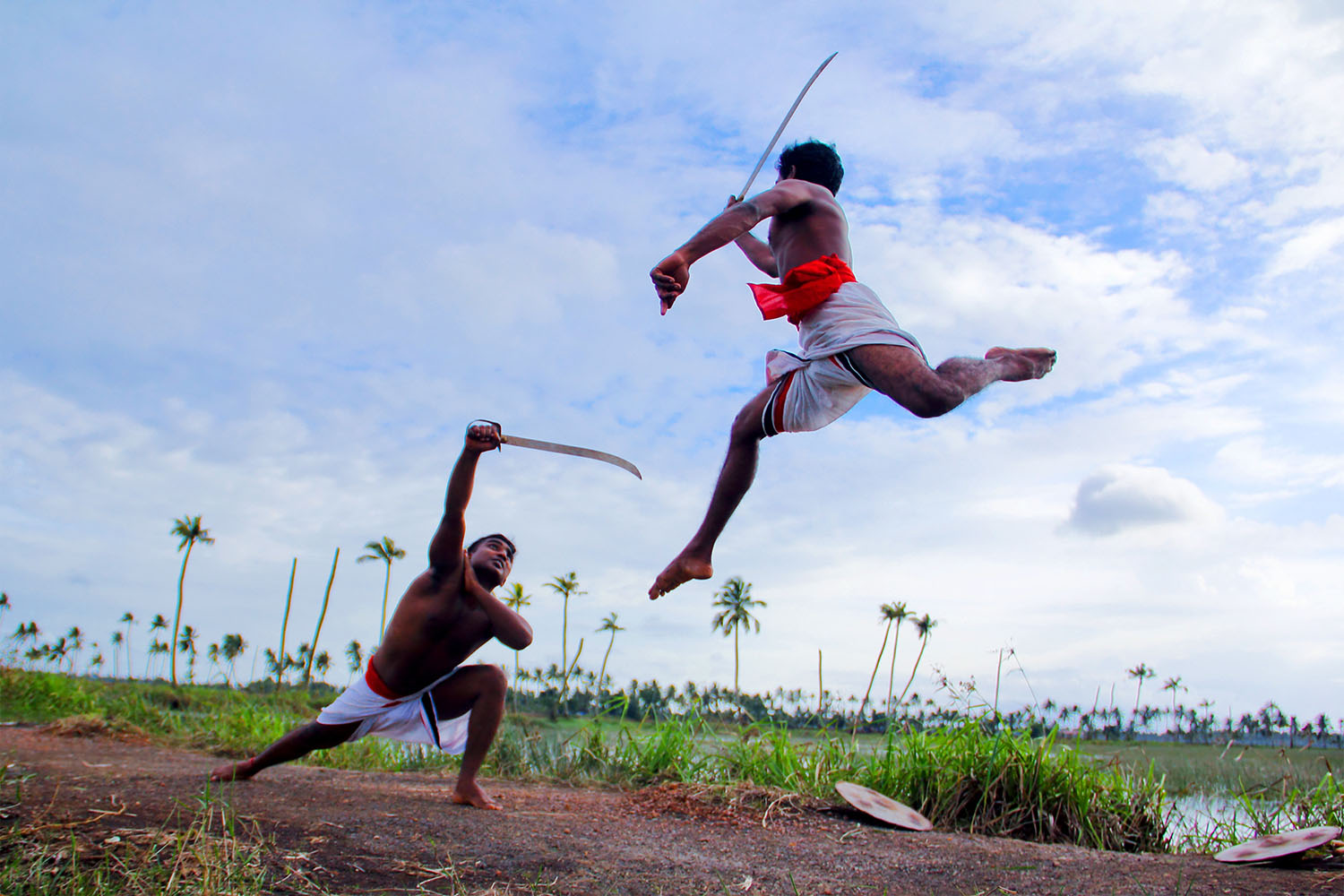ARTICLE
Kalaripayattu
Believed to have originated in the third century BCE, kalaripayattu is an armed martial art used for self-defence and is indigenous to the state of Kerala. Kalaripayattu is composed of two words, kalari means “place of combat” and payattu means “fighting” in Malayalam. Practitioners of the art form credit the Hindu saint Parashurama with founding the art form and consider him to be its first teacher or gurukkal.
Broadly, the art-form is divided into four stages with each stage including a technique, and the form does not follow a grading system that ranks students on the basis of seniority. The first stage, the meipayattu, involves various stretching exercises and jumping movements. The next stage is kolthari, where students are taught fighting techniques with the use of sticks. The wooden sticks, known as kettukari, are usually thin bamboo poles measuring six feet long. Other wooden weapons used in this stage include the viada (two-headed club), cheruvati (short, heavy stick) and lastly the ottakol (curved wooden weapon, with a club at one end). In the angathari stage, weapons made of unbending metal are used including the kattaram (dagger for duels at short range), sword and shield. The last stage, verumkaiprayoga, involves instruction in fighting without tools or weapons. Several of these movements are modelled on animals such as the horse, serpent, rooster or tiger, amongst several others, inspired by the forests of Kerala that form a vast part of the state’s landscape. Additionally, there are mainly two main styles of kalaripayattu: vadakkan or the northern style predominant in the Malabar region which emphasises graceful body movements and the weaponry and the thekken or the southern style, practised mainly in the Travancore region, involving free armed techniques and movements.
The training normally begins with an oil massage that is seen as an important part of the training of the art form, followed by prostration in front of the teacher and deities installed at an altar in the western corner of the kalari, known as a puttara. The number of deities can vary between seven and twenty-one. The main goddess of kalari is considered to be Bhagavathi, a form of the goddess Durga, and Para Devathai, a god that embodies both Shiva and Parvati. The kalari usually measures 21 feet by 42 feet and is an enclosed pit that is covered on all sides. When not located within the house, it consists of a roof made of palm leaves supported with a bamboo frame. This provides it with an airless atmosphere that is considered suitable for training. The training of Kalaripayattu also includes training students in ayurveda (ancient Indian medicine and healing system) and in locating the 108 vital points of the body, known as marma, which could be used in combat.
The practice of Kalaripayattu has traditionally been passed on to students through vaythari or the oral commands, but it was only in 1936 that these oral instructions were written down and published followed by more descriptive writing starting around 1953. Art forms such as theyyam, parichamuttu, poorakkali, poikali or vela kali, have been inspired by movements of kalaripayattu. The Indian Kalaripayattu Federation (IKF) was established in 1995 to promote the art form and it conducts state-level competitions, national championships and the National Kalaripayattu Festival.
Bibliography
Our website is currently undergoing maintenance and re-design, due to which we have had to take down some of our bibliographies. While these will be re-published shortly, you can request references for specific articles by writing to hellomapacademy@map-india.org.







